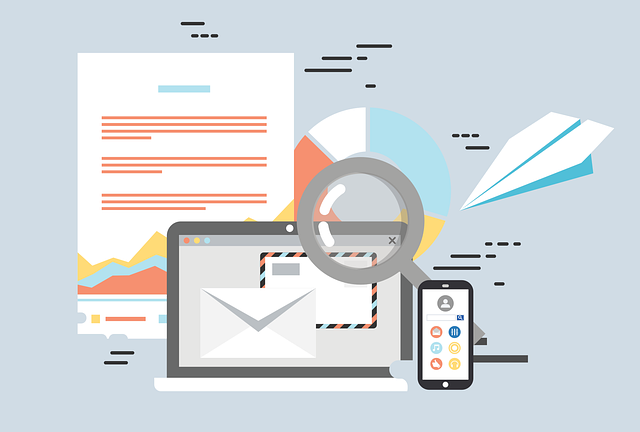
What’s that one email that made you quickly click “open”? Was it funny, thought-provoking, or did it have a freebie?
According to email marketing statistics, emails with personalized subject lines have a higher chance of being opened (26% higher). Personalization is vital because people want to be seen as individuals.
But how do you personalize an email when you’re writing to hundreds—or thousands—of people? You customize the copy.
In the world of email, the copy is often overlooked. People love to experiment with automation tools and play with design, but not many get super excited about the copy.
Email copy is a critical component of internet marketing. If you don’t get it right, you won’t get the conversions you want.
Here’s how to write email copy that converts.
#1: Make the Subject Line Compelling
It’s been said time and again that you shouldn’t judge a book by its cover. But when it comes to email, people have no problem making a snap decision. They either click open, delete, or report spam.
The last thing you want is your emails being marked as spam, especially when you’re trying to increase conversions.
The best way to avoid this is by coming up with a gripping subject line. Subject lines are so important that 47% of marketers test different ones to maximize their emails’ performance.
Here are 3 things to remember when creating subject lines:
1. Use actionable language
Use words that create a sense of urgency or trigger curiosity.
2. Short and clear is best
Email subject lines are discontinued if they are very long, particularly on mobile devices.
3. Include the recipient’s name
A person’s name sounds sweet to their ears. In addition, emails that include the recipient’s name in the subject line have higher click-through rates.
#2: Keep It Simple
When subscribers open your email, you only have seconds to capture their attention. Do not use technical jargon or words that are difficult to understand. Write as if you’re talking to a friend. However, the content should also be powerful and relevant so it can keep readers interested.
Make reading your email an awesome experience by using the right words. Emails are generally short, so every single word counts. Appeal to your readers’ emotions, stir their imagination, and get them to act by using analogies and sensory words.
What you don’t say in the email is also important for establishing trust. Do not make false promises or use sleazy marketing tactics, you may lose your subscribers forever.
#3: Write in the Second Person
Every email recipient is a real person: address them individually. When composing the email, imagine you’re writing it to one specific person—a friend.
A conversational tone is very useful for email. Avoid using words like “he” or “she” and use “you,” “your,” and “yours.” When you write in the second person, the reader gets the feeling that you’re having a one-on-one conversation.
Also, make the recipient the focus of your email. Do not give too much information about your company or yourself. Anyone who has subscribed to receive your emails is more interested in how the products or services you offer can benefit them.
If you have to talk about your brand, don’t mention it more than you mention the recipient. This tactic ensures you stay value-oriented.
#4: Know Your Target Audience
The biggest mistake people make when writing email copy is trying to appeal to everyone. Just like with darts, you have to aim if you want to hit the bullseye. If you throw darts without aiming, you may not even hit the board.
Is this what you want after spending a lot of time crafting the perfect email? We’re pretty sure it’s not.
Know your target market well, no matter the business you’re in. Who is buying your products? How can you help them? Carry out market research to know more about the people on your email list. That way, you can customize your copy to meet their needs.
The key to email marketing success is content relevancy. Do not send a blanket email to your entire list of contacts. There are very many automation tools available that make email list segmentation easier.
An email preference center—a tool that helps you to create a healthy communication rhythm with your subscribers—can help you to learn more about your target audience, do a better job segmenting your emails, and get updates if subscribers change their contact information.
Remember, this is the age of information overload. Your email recipients see a lot of information every day: emails, commercials, videos, blog posts, and much more. If you don’t write for your target audience, you will easily get ignored.

#5: Provide Value
Most people delete sales-y, irrelevant, and obnoxious emails in the blink of an eye. That’s why it’s so important to ensure your emails are better than the average email. The best place to provide value, get readers to connect with your content, and inspire them is in the email body.
The “just checking in” email is not effective and is also very selfish. People who send these types of emails do not offer any value. They try to persuade or force readers to make a purchase or reply to their email but it rarely works. Hard selling is bad for you and for your reader.
Providing value to your reader is the only way you can get them to act. If you are sending the initial email, do not try to convert the reader into a customer. Offer them something interesting to get the conversation going. If your email offers value, people will read it.
Here are some ways you can provide value to your email recipients:
- Give them educational content such as e-courses and e-books
- Share case studies, success stories, or customer testimonials
- Provide free resources, e.g. a company branded calendar or a free guide
#6: Make the Call to Action (CTA) Compelling
Email copy has one major goal: to convert the recipients. Motivate your readers to act by providing a hard-hitting call to action in the email’s body. Use action words that compel readers to click the CTA. Research has shown that people tend to actively respond after they’ve read more verbs.
Use short and simple action words in your call to action, like start, buy, order, sign up, and get. To further increase conversions, use words that show the reader the benefits you’re offering them, like complementary, customized, and free.
These are the "do"s for email calls to action:
- Use one prominent CTA in the email to increase conversions
- The CTA should be "above the fold" in the email body
- Contrast the color of the CTA with that of the email copy
The more visible it is, the more readers will click.
#7: Proofread
Have you ever received an email from a brand you love only to find your name spelled wrong? It hurt, didn’t it? You probably thought nobody bothered to proofread the email.
While proofreading may seem obvious, it is often overlooked. Typos and inaccuracies in your email copy can hurt your credibility. Yes, we are all short on time, but the least you can do is run spell check before you send that email.
When proofreading an email, read it carefully and slowly to determine whether it communicates your message. Make sure the subject line, the pre-header, and the email copy correspond. If the email body does not provide the content you promised in the subject line, readers will not open your next email.
Writing emails can be an uphill climb, especially if you add the editing and proofreading processes. A digital writing tool like ProWritingAid can edit your email, correct grammar errors, and enhance your writing.
#8: Encourage Readers to Respond
We are all different. However, in many instances, our brains react to psychological triggers in a similar way. When you understand these triggers, you can come up with creative ways to persuade readers to take a desired course of action—like respond to your emails.
Unlike direct mail, email opens the door to meaningful conversations with people who are genuinely interested in your business. Use an entertaining, distinctive voice to make your message sound like it comes from a real person who cares.
The message should also resonate with your readers’ interests and needs, making them more likely to engage with you, take up your offer, or forward your email to other prospective clients.
Be clear about what you are asking for. If your goal is to get people to respond to your email, encourage them to respond. It shows you are interested and responsive to what they have to say.
Start Writing Better Email Copy
Email marketing surpasses all digital marketing channels and can have a return on investment (ROI) as high as 4400%. Email can be your best marketing tool if you use it properly. Use these tips to start writing awesome email copy and watch your conversions increase and your business flourish.

